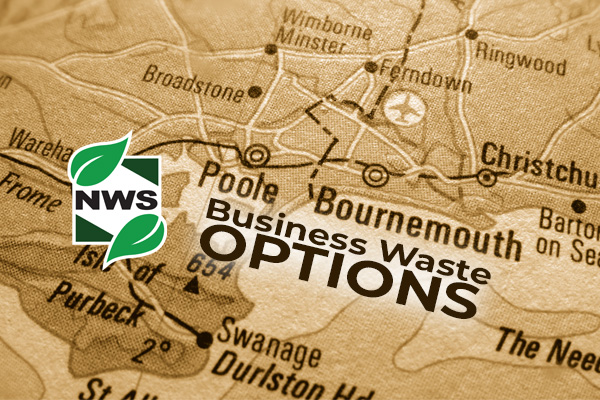Waste Electrical and Electronic Equipment (WEEE) is a critical environmental concern in the United Kingdom. As our reliance on electronic devices grows, so does the volume of discarded electrical and electronic items. In this Nationwide Waste Services article, we delve into the legislative framework governing WEEE. We explore the journey of collected WEEE waste in the UK, and shed light on the materials recovered and their integration into the circular economy.
Legislation and Scope
The Waste Electrical and Electronic Equipment Regulations 2013 (as amended) serve as the cornerstone of UK legislation for managing WEEE. These regulations aim to reduce the incineration and landfill disposal of electrical and electronic equipment. Key points include:
- Scope: The regulations cover EEE defined in 14 broad categories, including large household appliances, IT equipment, consumer electronics, and medical devices. Notably, they exclude products for military use, equipment sent into space, and certain industrial tools1.
- Producer Obligations: Producers—those who manufacture, import, or distribute EEE—are obligated to register annually. Their responsibilities include ensuring proper collection, treatment, and recycling of WEEE1.

WEEE Collection and Recovery
Collection Statistics
In 2022, the UK collected 467,517 metric tons of household WEEE. Although this represents a slight decrease from the previous year, it remains a significant volume2. The challenge lies in efficiently managing this waste stream to minimize environmental impact.
Treatment and Recovery
WEEE contains a treasure trove of valuable materials. Here’s how the recovery process unfolds:
- Collection: Once collected, WEEE undergoes sorting and categorisation. Large household appliances, such as fridges and washing machines, constitute over 40% of WEEE3. However, other items—such as IT equipment, TVs, and small household appliances—also contribute significantly.
- Materials Recovery: WEEE contains plastics, ferrous metals, and precious metals like gold, silver, and platinum. Additionally, rare earth elements (e.g., lanthanum, neodymium) are present in high-demand4. Recovery facilities meticulously extract these materials.
- Circular Economy Integration: Recovered materials find their way back into the circular economy. For instance:
- Metals: Recovered metals are reused in manufacturing processes.
- Plastics: Recycled plastics contribute to new products.
- Precious Metals: Gold, silver, and platinum are reclaimed for various applications.
- Rare Earth Elements: These critical components power renewable energy technologies, electronics, and electric vehicles.
Statistics and References
- The UK recycling rate for Waste from Households (WfH), including Incinerator Bottom Ash metal (IBAm), was 44.6% in 20215.
- Biodegradable municipal waste sent to landfill increased to 6.8 million tonnes in 20215.
- Packaging waste: In 2021, 63.2% of UK packaging waste was recycled5.
- Commercial and industrial (C&I) waste: An estimated 40.4 million tonnes were generated in 2020, with England responsible for 84%5.
Sources and Further Reading
- WEEE Regulations 2013: UK government guidance on WEEE regulations.
- WEEE Evidence and National Protocols Guidance: Detailed information on WEEE evidence and protocols.
- Veolia: Treating WEEE: Insights into WEEE recycling potential and resource recovery.
- UK Waste Statistics: Official UK waste estimates and recycling rates.
Remember, responsible management of WEEE not only conserves resources but also contributes to a sustainable future. Let’s power the circular economy by valuing what we discard! Looking for WEEE waste collection, get in touch with Nationwide Waste Services.
WEEE (Waste Electrical and Electronic Equipment) items, the principle materials that can be reclaimed from them, and the process name of reclamation:
| WEEE Items | Principle Materials Reclaimed | Reclamation Process |
|---|---|---|
| Refrigerators | Copper, Aluminum, Steel, Plastic | Shredding, Sorting, Melting |
| Computers | Gold, Silver, Copper, Aluminum, Plastic | Dismantling, Shredding, Smelting |
| Mobile Phones | Gold, Silver, Copper, Palladium, Plastic | Dismantling, Leaching, Smelting |
| Televisions | Copper, Gold, Silver, Aluminum, Plastic | Dismantling, Shredding, Smelting |
| Washing Machines | Steel, Copper, Aluminum, Plastic | Shredding, Sorting, Melting |
| Printers | Plastic, Steel, Aluminum, Copper | Dismantling, Shredding, Melting |
| Microwave Ovens | Copper, Steel, Aluminum, Plastic | Shredding, Sorting, Melting |
| Laptops | Aluminum, Copper, Gold, Plastic | Dismantling, Shredding, Smelting |
| Batteries (from various devices) | Lithium, Cobalt, Nickel, Lead | Crushing, Leaching, Smelting |
| LED Bulbs | Aluminum, Plastic, Copper, Glass | Dismantling, Shredding, Melting |
The following table illustrates the principle materials reclaimed from WEEE items per annum, the typical WEEE item the material comes from, and the volume in weight of each material that is reclaimed:
| Principle Materials Reclaimed | Typical WEEE Item | Volume Reclaimed (per annum, in kg) |
|---|---|---|
| Gold | Computers, Mobile Phones | 200,000 |
| Silver | Televisions, Mobile Phones | 150,000 |
| Copper | Refrigerators, Washing Machines | 500,000 |
| Aluminum | Laptops, Microwave Ovens | 300,000 |
| Palladium | Mobile Phones | 20,000 |
| Plastic | Printers, Washing Machines | 1,000,000 |
| Steel | Refrigerators, Washing Machines | 700,000 |
| Lithium | Batteries (from various devices) | 50,000 |
| Cobalt | Batteries (from various devices) | 30,000 |
| Nickel | Batteries (from various devices) | 40,000 |
| Lead | Batteries (from various devices) | 60,000 |
| Glass | LED Bulbs | 100,000 |










